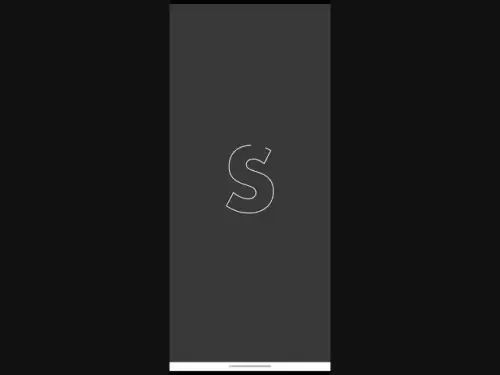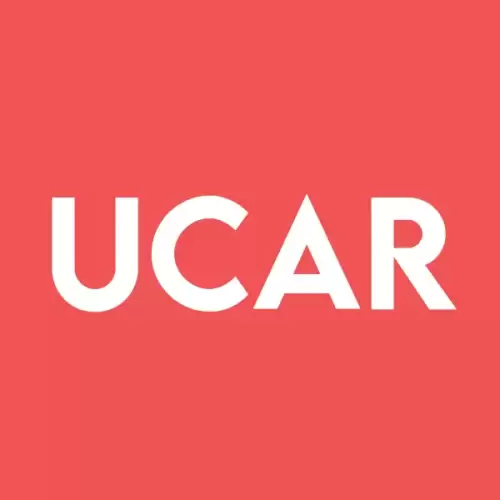 |
|
 |
|
 |
|
 |
|
 |
|
 |
|
 |
|
 |
|
 |
|
 |
|
 |
|
 |
|
 |
|
 |
|
 |
|
比特币Solaris通过使用重复的子采样投票来达成概率共识,提出了共识设计的突破。

Avalanche(s AVAX) has revolutionized blockchain technology with its groundbreaking contribution to consensus design. Its groundbreaking approach, which combines sub-sampled voting with a DAG (Directed Acyclic Graph) architecture, has unlocked new levels of throughput for blockchains.
Avalanche(S Avax)通过对共识设计的开创性贡献彻底改变了区块链技术。它的开创性方法将次采样的投票与DAG(定向无环形图)结构结合在一起,已解开了区块链的新吞吐量。
However, while Avalanche’s innovation in achieving consensus with high throughput is undeniable, its model does come with trade-offs, especially in terms of fault tolerance, which becomes critical in adversarial conditions or periods of high validator churn.
但是,尽管不可否认的是,雪崩在达成高量吞吐量方面的创新是不可否认的,但它的模型确实与权衡相关,尤其是在容忍度方面,这在对抗性条件或高验证器流动期的时期至关重要。
Bitcoin Solaris, a novel blockchain protocol currently in the final stages of its presale, addresses these limitations with a fundamentally different approach that leverages a Merkle-DAG structure to maintain complete order and optimal Byzantine Fault Tolerance (BFT) throughout its entire validator network.
比特币Solaris是一种新型的区块链协议,目前处于其预售的最后阶段,它通过根本不同的方法来解决这些局限性,该方法利用了整个验证器网络,以利用默克尔 - DAG结构来维持完整的订单和最佳的拜占庭式容错(BFT)。
Instead of relying on repeated messages or randomized polling like Avalanche’s DAG, Bitcoin Solaris uses cryptographic linkages across state changes to enforce consistency, determinism, and conflict resolution without requiring any global coordination. This property is key to increasing throughput and finality speed, and it also improves resilience against long-range attacks and inconsistent state propagation—critical weaknesses of Avalanche’s design when applied to permissionless environments.
比特币Solaris不依赖重复的消息或随机轮询(如Avalanche的DAG),而是使用跨州更改的加密联系来执行一致性,确定性和冲突解决方案,而无需任何全球协调。该属性是提高吞吐量和最终速度的关键,它还提高了对远程攻击和不一致状态传播不一致的弹性 - 当应用于无许可环境时,雪崩设计的临界弱点。
Merkle-DAG Integration Across the Dual-Layer Architecture
跨双层体系结构的默克 - dag集成
The innovation lies in how the Merkle-DAG is implemented across Bitcoin Solaris’s dual-layer blockchain, where each layer maintains autonomy while contributing to network-wide consensus:
创新在于如何在比特币Solaris的双层区块链中实现Merkle-DAG,在此,每一层都保持自主权,同时促进整个网络范围的共识:
Unlike Avalanche’s DAG-based consensus, where conflicting transactions may require multiple rounds of probabilistic resolution, Bitcoin Solaris’s Merkle-DAG model defines absolute order. This ensures state determinism even during validator faults or latency spikes—eliminating ambiguity and reorg risks.
与雪崩的基于DAG的共识不同,这种共识可能需要多轮概率分辨率,比特币Solaris的Merkle-DAG模型定义了绝对顺序。这也确保了国家的决定论,即使在验证器断层或延迟峰值期间,也可以利用歧义和重复风险。
Enhanced Byzantine Fault Tolerance Through Structural Verification
通过结构验证增强拜占庭的容错性
Avalanche’s consensus reaches finality when enough nodes probabilistically agree that a transaction is accepted. However, this model becomes vulnerable when validator identities change frequently or malicious participants intentionally delay propagation. Bitcoin Solaris resolves this by embedding Merkle-root checkpoints directly into block headers, providing cryptographic proof of network-wide state without repeated polling.
当足够的节点概率地同意接受交易被接受时,雪崩的共识即将达到最终状态。但是,当验证者身份经常变化或恶意参与者故意延迟传播时,该模型就会变得脆弱。比特币Solaris通过将Merkle-Root检查站直接嵌入块标头中来解决此问题,从而在不重复进行轮询的情况下提供了网络范围内的加密证明。
This structure supports stronger BFT by making it computationally infeasible for a faulty subset of validators to rewrite history or produce inconsistent forks. Validators reach consensus by verifying Merkle proofs and synchronized time stamps, not by polling neighbors repeatedly—a model that lowers latency and increases resistance to asynchronous faults.
该结构通过使验证器的故障子集重写历史或产生不一致的叉子来支持更强的BFT。验证者通过验证默克尔的证明和同步时间戳,而不是通过反复对邻居进行轮询,该模型降低了潜伏期并增加了对异步断层的抵抗力,从而达成共识。
This architecture maintains fault tolerance even when up to one-third of nodes behave maliciously while reducing coordination load and improving validator independence—two areas where Avalanche’s design introduces complexity.
即使多达三分之一的节点表现得很恶意,同时减少协调负载并改善了验证器独立性,该架构仍保持容忍度。
Crypto Royal breaks down how Bitcoin Solaris’s Merkle-DAG architecture improves upon Avalanche’s probabilistic model in a detailed comparison. The video highlights fault tolerance thresholds, validator independence, and the system’s ability to maintain consensus under pressure.
Crypto Ryare分解了比特币Solaris的Merkle-Dag架构如何在详细的比较中对Avalanche的概率模型进行改进。该视频突出显示了容错阈值,验证器独立性以及系统在压力下保持共识的能力。
Presale Phase 3: Structured Entry Ahead of Infrastructure Expansion
前3阶段:在基础设施扩展之前的结构化进入
Bitcoin Solaris is currently in Presale Phase 3, with BTC-S tokens priced at $3 USDT. This phase offers access ahead of Merkle-DAG protocol activation across the full validator network before centralized exchange listings.
比特币Solaris目前处于前3阶段,BTC-S代币的价格为3美元。此阶段在集中式交换列表之前,在整个验证器网络上激活Merkle-DAG协议之前提供了访问。
The BTC-S supply is fixed at 21 million tokens, with 4.2 million (20%) allocated for presale across all phases. There is no inflation, and token emissions are tied directly to protocol-defined mining and validator participation. This structure rewards early participants before infrastructure scaling increases demand and network complexity.
BTC-S供应固定为2100万个令牌,在所有阶段分配了420万(20%)。没有通货膨胀,令牌排放直接与协议定义的采矿和验证者参与有关。这种结构在基础架构扩展之前奖励早期参与者会增加需求和网络复杂性。
Third-Party Audits Reinforce Merkle-DAG Security
第三方审核加强了默克尔 - dag安全性
Bitcoin Solaris has undergone full protocol audits to validate its unique structural approach:
比特币Solaris进行了完整的协议审核,以验证其独特的结构方法:
These audits validate that the Merkle-DAG implementation not only meets performance targets but also enforces Byzantine resilience and verifiable state propagation under real-world conditions.
这些审计验证了默克尔 - dag实施不仅符合绩效目标,而且还达到了现实情况下拜占庭式的弹性和可验证的状态传播。
Avalanche’s DAG model showed that blockchain consensus could scale — but Bitcoin Solaris proves it can scale deterministically and securely. By embedding the Merkle-DAG structure across a layered validator system, it solves key limitations in BFT enforcement and state finality. As Phase 3 of the presale continues and Merkle-DAG logic expands across the protocol, Bitcoin Solaris is setting a new standard in consensus precision, resilience, and architectural clarity.
Avalanche的DAG模型表明,区块链共识可以扩展 - 但比特币Solaris证明它可以确定性地扩展。通过嵌入分层验证器系统的Merkle-DAG结构,它解决了BFT执行和状态终止的关键局限性。随着预售的第3阶段继续进行,Merkle-Dag逻辑在整个协议中扩展,比特币Solaris正在为共识精度,弹性和建筑清晰度设定新的标准。
Website: https://bitcoinsolaris.com/
网站:https://bitcoinsolaris.com/
X: https://x.com/BitcoinSolaris
X:https://x.com/bitcoinsolaris
Telegram: https://t.me/Bitcoinsolaris
电报:https://t.me/bitcoinsolaris
Disclaimer: This is a sponsored article, and views in it do not represent those of, nor should they be attributed to, ZyCrypto. Readers should conduct independent research before taking any actions related to the company, product, or project mentioned in this piece; nor can this article be regarded as investment advice. Please be aware that trading cryptocurrencies involves substantial risk as the volatility of the crypto market can lead to significant losses.
免责声明:这是一篇赞助的文章,其中的观点并不代表Zycrypto的观点,也不应归因于Zycrypto。读者应在采取与本文中提到的公司,产品或项目有关的任何行动之前进行独立研究;本文也不能被视为投资建议。请注意,交易加密货币涉及重大风险,因为加密市场的波动可能会导致巨大的损失。
免责声明:info@kdj.com
所提供的信息并非交易建议。根据本文提供的信息进行的任何投资,kdj.com不承担任何责任。加密货币具有高波动性,强烈建议您深入研究后,谨慎投资!
如您认为本网站上使用的内容侵犯了您的版权,请立即联系我们(info@kdj.com),我们将及时删除。
-

-

-

-

- 以太坊鲸鱼活动和体积激增:炒作是什么?
- 2025-07-23 20:00:29
- 以太坊的鲸鱼活动和交易量激增。大玩家看好吗?让我们深入了解什么推动了这一趋势以及对ETH的意义。
-

- Pepe Dollar,Bitcoin Maxis,预售爆炸:炒作是什么?
- 2025-07-23 20:00:10
- Pepe Dollar用预售浪潮。比特币Maxis很感兴趣。是什么引起了这种爆炸性的兴趣?
-

- U Power,EVS和Web3:收取未来
- 2025-07-23 19:59:59
- 探索U Power的创新电动汽车技术,不断发展的电动汽车行业以及Web3集成的交集,重点关注可持续性和用户参与度。
-

- 婚姻,离婚和预测:导航婚姻的模糊水域
- 2025-07-23 19:59:29
- 探索婚姻和离婚的复杂性,以及预测婚姻结果的挑战。不仅仅是硬币折腾!
-

- Ethena的ENA:收费激发一场革命?
- 2025-07-23 19:53:18
- 深入探索埃塞纳(Ethena)的ena代币,探索其收费机制,最近的激增和潜在的纳斯达克列表上市。这是Defi的下一件大事吗?
-





























































